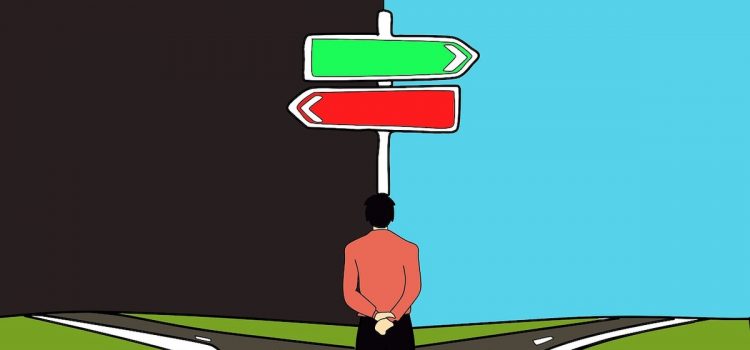

This article is an excerpt from the Shortform book guide to "Actionable Gamification" by Yu-kai Chou. Shortform has the world's best summaries and analyses of books you should be reading.
Like this article? Sign up for a free trial here.
What is gamification motivation? What are the different kinds of motivations? How can you use them to attract and retain players?
According to author Yu-kai Chou, gamification is an effective tool to enhance motivation and engagement in various contexts, such as education, business, and personal development. But simply having a range of gamification motivations isn’t enough to create an engaging system.
Read on to learn more about gamification motivations and how to balance them, according to Chou.
Balancing Gamification Motivations
Author Yu-kai Chou explains in his book, Actionable Gamification, that having a diversity of gamification motivations alone isn’t enough for an engaging gamification system. You also need to balance these motivations and consider how they work together. Chou identifies several categories of motivation that need to be in balance to create an engaging gamification system for your business: Internal motivations need to be balanced against external motivations, and positive motivations need to be balanced against negative motivations.
In this article, we’ll explore internal and external gamification motivations and how to balance them in your gamification system.
Internal vs. External Motivation
In planning your gamification system, Chou explains that you’ll need to balance external and internal motivations.
External Motivations
Chou defines external gamification motivations as drives to obtain rewards outside of the activity itself. For example, trophies, points, lottery payouts, and other prizes may motivate someone to overcome a challenge they wouldn’t otherwise enjoy or find rewarding. External motivations include those we discussed such as owning, accumulating, and achievement. In your gamification system, these could be rewards for customer loyalty, bonuses for employees, or points users earn for unlocking achievements.
| The Role of External Rewards in Reinforcing Habits In Atomic Habits, James Clear elaborates on the power of external rewards in making an activity habit-forming. He explains that rewards condition people’s behavior so that they will try to obtain the rewards again in the future. He breaks this process down into four parts: 1. The cue occurs when the brain notices the possibility of a reward. In your gamification system, this signal will have to be part of the feedback system that gives players information. 2. The craving is the emotional desire for a reward. Players experience a heightened emotional state of desire. Some games create space for this craving by allowing a window of time between the signal and the action that produces the reward. 3. The response is the action that you want the player to take. In your gamification system, these will be aligned with your ideal behaviors. 4. The reward is the final payoff a player receives for taking a desired action. This will reinforce the behavior and prepare the player to experience the whole cycle again once they encounter the cue again. |
Internal Motivations
Chou defines internal gamification motivations as drives to engage in an activity without obtaining an outside reward. In other words, people find the activity itself rewarding. Internal motivations include creativity, social engagement, and mystery. This is because people naturally find it satisfying to create things, make relationships, and satisfy their curiosities. In your gamification system, these could take the form of letting customers customize their product or post messages for other users on a chat forum.
Chou stresses that games need internal motivations to keep players engaged for the long term. However, a game that over-relies on internal motivations can also have its shortcomings. Players may not have a reason to engage in a game at first without an external reward. They won’t know how fun it is until they try, and they won’t try unless given a good reason. Therefore, balancing internal and external motivations is essential for an effective gamification system.
Let’s say you want to gamify your user’s experience of a learning app. If you are already giving users points for lessons completed or prizes for major milestones, then you’ll need to balance these out with internal motivations. Consider adding opportunities for collaboration and building teams or diversifying choices so that users can pick their own curricula.
| The Role of Learning in Internal Motivations and Game Longevity In A Theory of Fun for Game Design, Raph Koster sheds light on why internal motivations may be more important for longevity than external motivations. Koster argues that games stay interesting so long as players are still learning. While they continue to experience novelty and recognize new patterns, players find games engaging. However, once a player understands the game and it becomes predictable, they will quickly lose interest. This explains why people can devote their careers to learning and teaching Go, a classic Chinese board game with 3361 possible board configurations, but not Duck, Duck, Goose. Go is complex enough that a player can continue learning strategy throughout their life, but Duck, Duck, Goose is simple enough that a player quickly runs out of new strategies to learn. Chou’s internal motivations all involve types of learning. When players draw on their creativity to create their own strategies, they get to keep discovering new things and testing out new ideas. Games that are unpredictable and have uncertain outcomes stay engaging because players are constantly gaining new information as they discover possibilities they couldn’t predict. Finally, people find social relationships rich and rewarding because, as relationships grow deeper, people will continue learning new things about each other. |
Exercise: Balance Your Gamification Motivations
Now that you have some core ideas for your gamification system, you’ll have a chance to balance the motivations using Chou’s recommendations.
- How can your gamification system make use of internal motivations? Chou claims that these include: creativity, relationships, or randomness and mystery.
- Now consider external motivations. How can your game add extra layers of reward and incentive? Chou claims that the external motivations include ownership, growth, and achievement.
- Now consider how your game will use positive motivations to keep your players engaged for the long term. Chou claims that these are: a sense of purpose, growth and achievement, and creativity.
- Lastly, consider how you might add a sense of urgency and intensity using negative motivations. Chou claims that these involve limiting opportunities, adding risks, or creating a sense of pressure.

———End of Preview———
Like what you just read? Read the rest of the world's best book summary and analysis of Yu-kai Chou's "Actionable Gamification" at Shortform.
Here's what you'll find in our full Actionable Gamification summary:
- How to use gamification to grow your business
- Why some gamification systems are addictive and others fail
- How to keep players engaged and motivated






